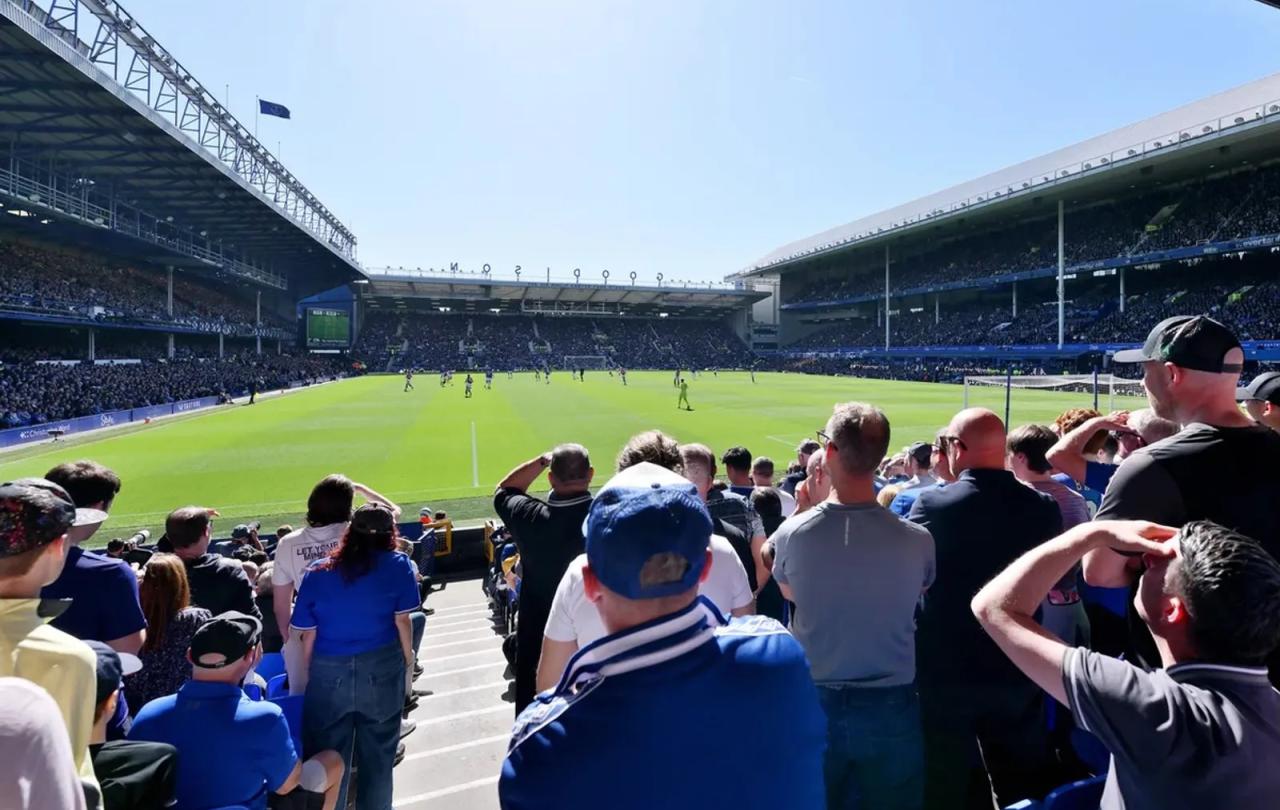
In some places football is considered a religion. No more so than in Liverpool. Its citizens revere not just one team but two - the Blues and the Reds.
It's a divided city. Some wear the blue of Everton FC, others the red of Liverpool FC. A mere mile separates the stadia where supporters pay homage to their heroes.
As the chaplain to Everton, I often contemplate this devotion. Is Everton’s stadium Goodison Park a place of worship? And is football really a religion?
The quick answer is “Yes” and “No”. Goodison Park is surely a place of worship, and football is not a religion, though that second answer may need a bit of a defence.
That football grounds are places of worship is instanced at every game played: chants of praise are sung and worth is given to the players, the team, the history, the manager, maybe even the owner.
Goodison Park has hosted games since 1892. The attendance at the ground’s opening was 12,000, the cost £3,000, and the point of it all? Everton Football Club had begun in 1878 as St Domingo’s, founded by a Methodist minister. The Rev Ben Swift Chambers wanted to keep his St Domingo’s Church cricket team fit during the winter, and the cricket team was to help young men stay away from less worthy pursuits. Similarly, Manchester City was founded by Anna Connell, the vicar’s daughter, to keep young men on the streets of East Manchester away from trouble.
St Domingo’s then became Everton FC and later came the move to the new stadium on Goodison Road. The crowds brought gate receipts, the players and staff needed wages, and football clearly becomes a business as well as an activity to help young men avoid trouble.
Then and now the game is entertaining, the outcome is unpredictable, and the players can show outstanding skills, athleticism, courage, resilience, teamwork.
That’s where the worship naturally comes in. Awe and wonder are important human attributes, and Evertonians have delighted in the skills and character of players down the club’s 147-year history. At every football ground there will be chants for players that celebrate their skill, character, achievements, giving worth to their ability. And yes, there may also be chants doing the opposite of worship to the opponents and to the unlucky referee just trying to do their job. The team is celebrated and worshipped, sometimes in language that is hard to believe: “We’re by far the greatest team the world has ever seen” can feel like undeserved worship when Everton are struggling to avoid relegation. Such optimistic sentiment may reflect Evertonians’ awareness of the importance of history and the bigger picture! Another chant begins “And if you know your history...”.
Outside Goodison Park is a statue of Dixie Dean: he scored 60 league goals in the 1927-28 season and his ability and achievement is worshipped, given great worth, by many before and after a game. The other statue outside the ground is of the “Holy Trinity”, Howard Kendall, Alan Ball and Colin Harvey, the midfield three that helped bring the League title to Everton in 1970. Many such players in the history of the club have received and still receive worship. Goodison Park is a place of hope, frustration, joy, anguish, and, yes, of worship.
But is football a religion? Goodison Park is called by some a cathedral, the club has fans, it conveys an identity, the game offers principles for living such as teamwork and the valuing of different gifts.
Yes, football is like a religion, and understandably religious language and gesture are often used around the game. “Salvation!” says the commentator as Graham Stuart scores the winning goal in the 3-2 win over Wimbledon to keep Everton in the Premier League. Television cameras can home in on a supporter clasping their hands in prayer at some decisive moment.
And yes, football can play a part in someone’s life that is very like the part a religion can play: it can become the most important thing, it can shape mood, behaviour, it can provide long-lasting rituals.
But it is one thing for football to be like a religion in some respects, it is another for it genuinely to qualify as a religion.
This of course begs the question “how are you defining religion?” I am going for the stronger definition. So, I’m not agreeing with a statement such as “shopping is your religion”. I would rather say “shopping is one of your passions, interests, maybe overriding interests, but no, not a religion”. Some of the stronger dictionary definitions include “A system of beliefs, symbols and practices that addresses the nature of existence”, and “the way people deal with ultimate concerns about their life” and “a set of beliefs concerning the cause, nature, and purpose of the universe”.
Does football meet those definitions, does football answer the deepest questions of life?
Who am I? An Evertonian, but deeper than that, who am I?
What is the purpose of my life beyond hoping Everton win football matches?
What happens after death?
Football does not address those ultimate concerns. It is like a religion in offering identity, inspiring worship, having a gathering point like Goodison Park for communal activity, but it is not a religion as it does not address those ultimate questions.
I will be going to worship the skills and characters of players, coaches, staff and manager at Goodison Park before the season ends, but I don’t see my love of football as a religion. The Christian faith is my religion: it addresses the deepest questions, the ultimate concerns, just as other religions seek to do.
There is more to life than football. As an Everton manager, a practising Catholic, Carlo Ancelotti once said: “Football is the most important of the less important things”.
Celebrate our 2nd birthday!
Since March 2023, our readers have enjoyed over 1,000 articles. All for free. This is made possible through the generosity of our amazing community of supporters.
If you enjoy Seen & Unseen, would you consider making a gift towards our work?
Do so by joining Behind The Seen. Alongside other benefits, you’ll receive an extra fortnightly email from me sharing my reading and reflections on the ideas that are shaping our times.
Graham Tomlin
Editor-in-Chief





